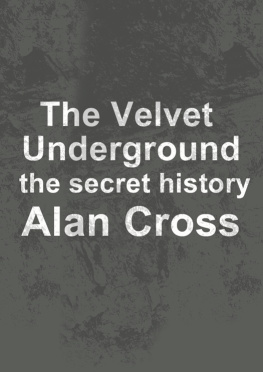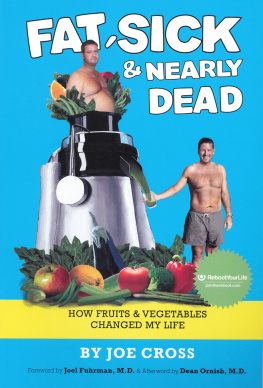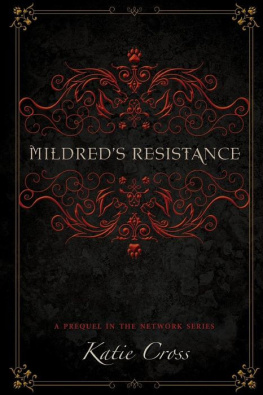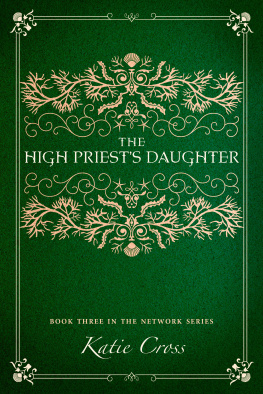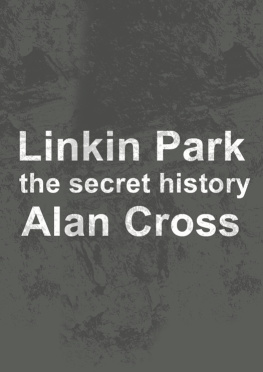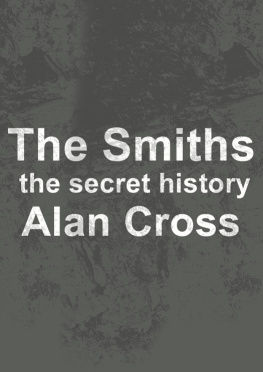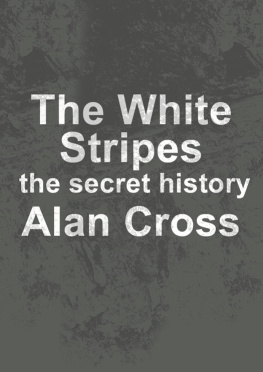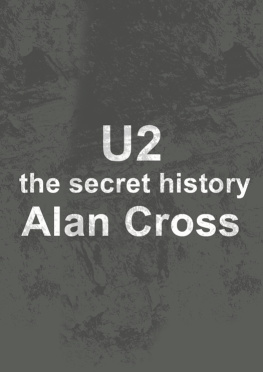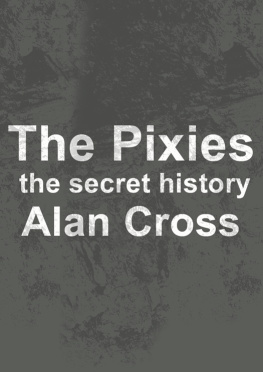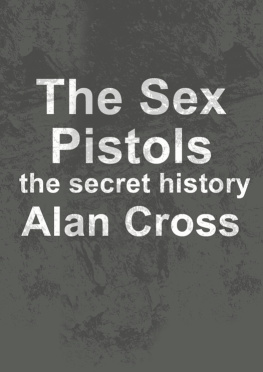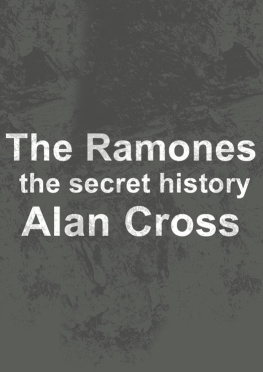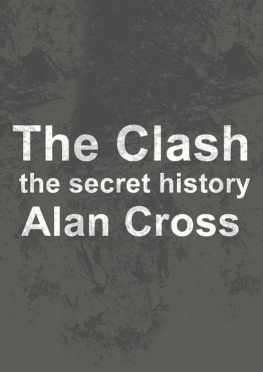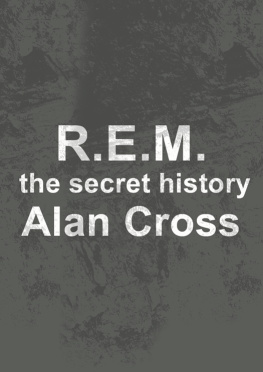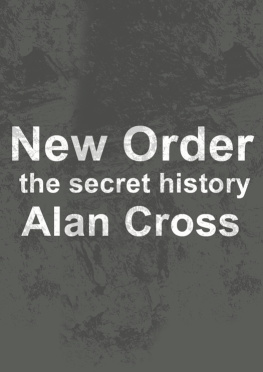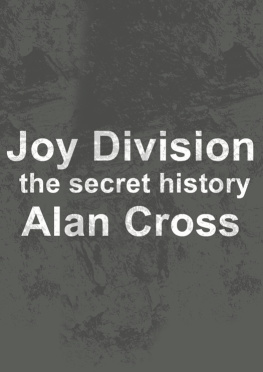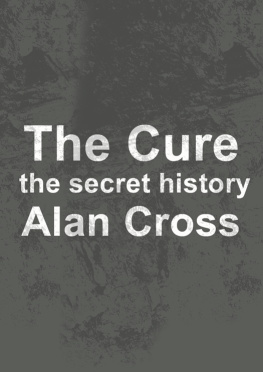Cross - The velvet underground: the secret history
Here you can read online Cross - The velvet underground: the secret history full text of the book (entire story) in english for free. Download pdf and epub, get meaning, cover and reviews about this ebook. year: 2011;2014, publisher: HarperCollins Canada;Audio Joe, genre: Non-fiction. Description of the work, (preface) as well as reviews are available. Best literature library LitArk.com created for fans of good reading and offers a wide selection of genres:
Romance novel
Science fiction
Adventure
Detective
Science
History
Home and family
Prose
Art
Politics
Computer
Non-fiction
Religion
Business
Children
Humor
Choose a favorite category and find really read worthwhile books. Enjoy immersion in the world of imagination, feel the emotions of the characters or learn something new for yourself, make an fascinating discovery.
- Book:The velvet underground: the secret history
- Author:
- Publisher:HarperCollins Canada;Audio Joe
- Genre:
- Year:2011;2014
- Rating:4 / 5
- Favourites:Add to favourites
- Your mark:
- 80
- 1
- 2
- 3
- 4
- 5
The velvet underground: the secret history: summary, description and annotation
We offer to read an annotation, description, summary or preface (depends on what the author of the book "The velvet underground: the secret history" wrote himself). If you haven't found the necessary information about the book — write in the comments, we will try to find it.
The velvet underground: the secret history — read online for free the complete book (whole text) full work
Below is the text of the book, divided by pages. System saving the place of the last page read, allows you to conveniently read the book "The velvet underground: the secret history" online for free, without having to search again every time where you left off. Put a bookmark, and you can go to the page where you finished reading at any time.
Font size:
Interval:
Bookmark:
An old music industry saying is that the Velvet Underground didnt sell many records, but everyone who bought one of their albums formed a band. Whoever first uttered those words wasnt just being glib; virtually every alternative band formed over the last 30 years owes some debt to the original VU. If you need to put some sort of number on things, consider this: close to 1,000 different bands from around the world (from Nirvana to Janes Addiction to R.E.M.) have recorded versions of Velvet Underground songs.
The Velvet Undergrounds style was intentionally crude and obnoxious. Peppered with sex, drugs and tales of deviant behavior, their music offered a paranoid, self-destructive vision of life on the streets of New York. Their bleak, in-your-face songs challenged (and ultimately destroyed) the wide-eyed innocence of rock and roll. While the enormity of their accomplishments wasnt apparent until years after they broke up, no other band from the 1960s had a greater influence on post-punk music.
Lou Reed was born Lewis Allan Reed in Brooklyn on March 2, 1942, the eldest of two children. Raised in Freeport, Long Island, he was sent to a psychiatrist at age 17 when his parents (a wealthy accountant and an ex-beauty queen) became alarmed at his wild mood swings and violent outbursts. Other accounts suggest that they were concerned that their son had homosexual tendencies. After threatening an ROTC instructor and punching a hole through a wall, young Lou was subjected to eight weeks of shock treatments in the summer of 1959an experience later recounted in a song called Kill Your Sons on his 1974 solo album, Sally Cant Dance.
Despite his parents objections, Reed formed several rock combos in his teens. The earliest seems to have been the Jades, a group named after Reeds birthstone. When Reed was 15, in 1958, the Jades recorded a single called So Blue, a song that Reed had written in his bedroom. However, just before the record came out on November 28, the Jades realized that there were too many other bands using that name. This is why all copies of the 45 list the group as The Shades. Reed hand-delivered a copy to New York DJ Murray the K, who liked the songs doo-wop/Buddy Holly sound and featured it on his program. This led to a quickie deal with a label called Dot.
In 1961, Reed enrolled in Syracuse University, where he studied creative writing and poetry under Delmore Schwartz, the streetwise New York poet whom Reed would later describe as his spiritual godfather. Through these classes (as well as frequent spontaneous lectures in the campus bar), Schwartz became a major influence not only on Reeds future songwriting style but also on his general outlook on life. Reed dedicated the song European Son from the first Velvet Underground album to Schwartzs memory.
Between classes, Reed worked as a DJ at the campus radio station, spinning an esoteric variety of R&B, doo-wop and jazz on a program he called Excursion on a Wobbly Rail. In his spare time, he read James Joyce, William Burroughs and Raymond Chandler. Several evenings per week were spent jamming in a series of bands. These noisy, unstructured rehearsals attracted a guitarist named Sterling Morrison (born Holmes Sterling Morrison on August 29, 1942), who was intrigued by the noise drifting from Reeds room. Although Morrison wasnt officially a student at Syracusehe couldnt get the scholarship he needed but went to classes anywayhe still managed to find space in the dorm next door. He stayed at Syracuse for two semesters before enrolling at City College in New York.
Once Reed graduated in 1964, he moved back to his parents home, where they once again kept him on a tight leash with the help of a tranquilizer called Placidyl. Even though they did their best to keep their son from visiting the city, Reed soon found a job at the headquarters of Pickwick Records on Staten Island. Pickwick specialized in low-budget albums of big hits recorded by anonymous studio groups that were then sold at supermarket checkouts and low-end department stores. Reeds position was essentially that of a hack songwriter paid to crank out forgettable formulaic pop songs for the masses. Despite the assembly-line nature of the work, Reed wrote a near-hit in 1964. Do The Ostrich was a send-up of the dance crazes that were sweeping America at the time (like the Twist and the Mashed Potato), which Pickwick was only too happy to exploit. The single was issued under the name The Primitives. When American Bandstand called and asked if this fictitious group were available to appear on the show, Pickwick scrambled to put together some kind of band. Enter John Cale.
Cale was a Welsh-born (March 9, 1940) avant-garde classical musician who had been working as a viola player in the Dream Syndicate, part of La Monte Youngs Theater of Eternal Music in New York. Cale had a chance meeting with Terry Phillips, a producer with Pickwick, who assumed that Cale was a rock musician because of his long hair. Phillips convinced Cale and another musician named Tony Conrad to participate in the Primitives masquerade in exchange for a few fast bucks. They met Reed at a party, and the project was given the go-ahead. Even though everyone gave it their best shot, the record bombed and the Primitives evaporated into history.
After the Primitives charade ended, however, Reed played Cale Heroin and Waiting for the Man, just two of the Delmore Schwartzinspired songs he had written on his own time. Although Cale hated folky acoustic music, he immediately recognized that Reeds lyrics were different from anything he had ever heardquite simply, they were different from anything any rock and roller had ever written. Impressed with the literary and straight-from-the-heart qualities of Reeds music, Cale shared some of his avant-garde approaches. The two of them started applying weird ideas to basic rock: detuned string instruments, one-chord improvisations and atonal arrangements.
Since these initial collaborations went well, Reed moved into Cales apartment at 56 Ludlow Street in New York and the two of them began to play in a series of bands. The first was the Falling Spikes, a name derived from the time Reed and Cale both caught hepatitis from the heroin syringes they shared. Several women were part of these early projects, including an unemployed actress into S&M and a single mother/nymphomaniac. In early 1965, they issued a single called Why Dont You Smile Now as the All Night Workers, a group that sounded vaguely like the Everly Brothers crossed with Motown. Both Reed and Cale supported these groupsand their new drug habitsby selling blood to blood banks and by posing for pictures as murderers and rapists in cheap true crime magazines.
In April 1965, they met Sterling Morrison on the subway and asked if he was interested in joining their new band, the Warlocks. Together with drummer Angus MacLise (a neighbor and occasional participant in La Monte Youngs projects), they finally began to get serious about music as a career. Gigs were few and far between, but they did find work providing music at screenings of experimental films.
A turning point came several weeks later when Tony Conrad dropped in on a rehearsal carrying a trashy paperback he had found in the gutter along Broadway. The book was The Velvet Underground, a study of weird suburban sex habits and fetishes written by Michael Leigh. That was certainly a better name than the Warlocks (which, by the way, had already been taken by the San Francisco group that was about to become the Grateful Dead). With a permanent name in place, the group was encouraged to send out very rough-sounding demo tapes to record labels across the country. These tapes, recorded in the Ludlow Street apartment, featured early versions of future VU classics The Black Angels Death Song and Venus in Furs and show the first signs of Kinks and Whoinspired guitar feedback. No one took the bait.
Font size:
Interval:
Bookmark:
Similar books «The velvet underground: the secret history»
Look at similar books to The velvet underground: the secret history. We have selected literature similar in name and meaning in the hope of providing readers with more options to find new, interesting, not yet read works.
Discussion, reviews of the book The velvet underground: the secret history and just readers' own opinions. Leave your comments, write what you think about the work, its meaning or the main characters. Specify what exactly you liked and what you didn't like, and why you think so.

